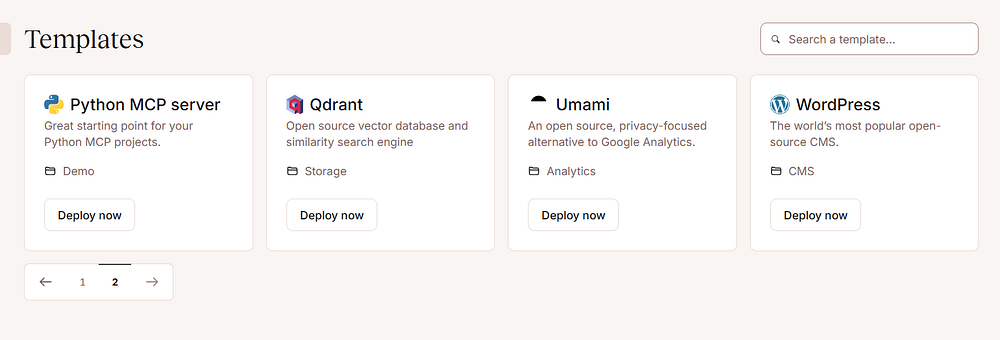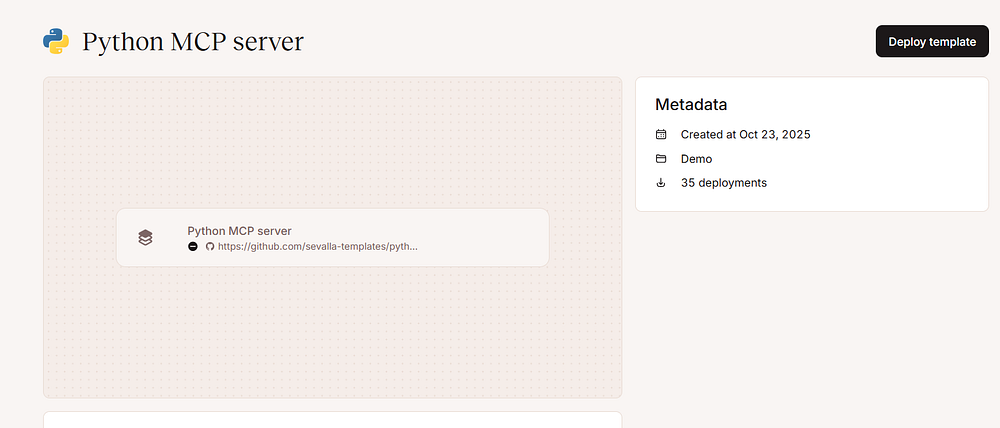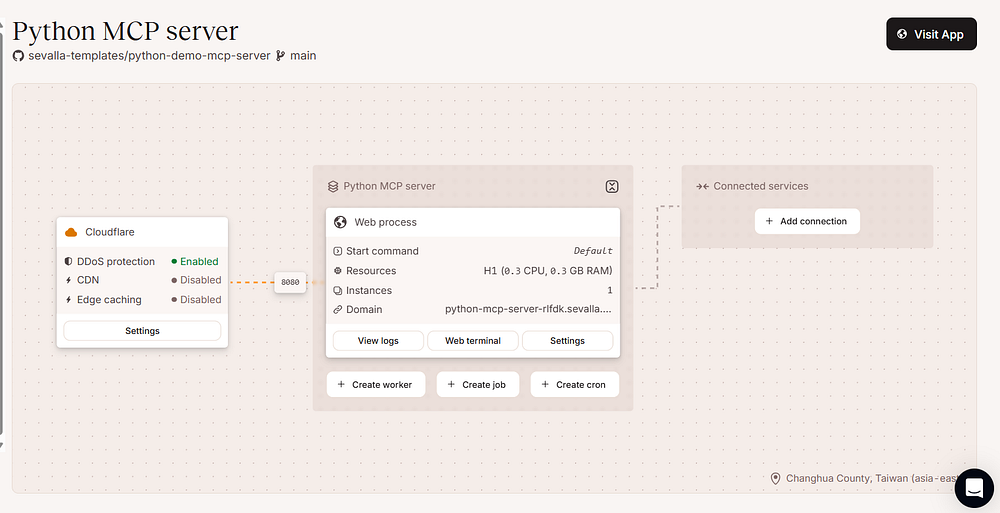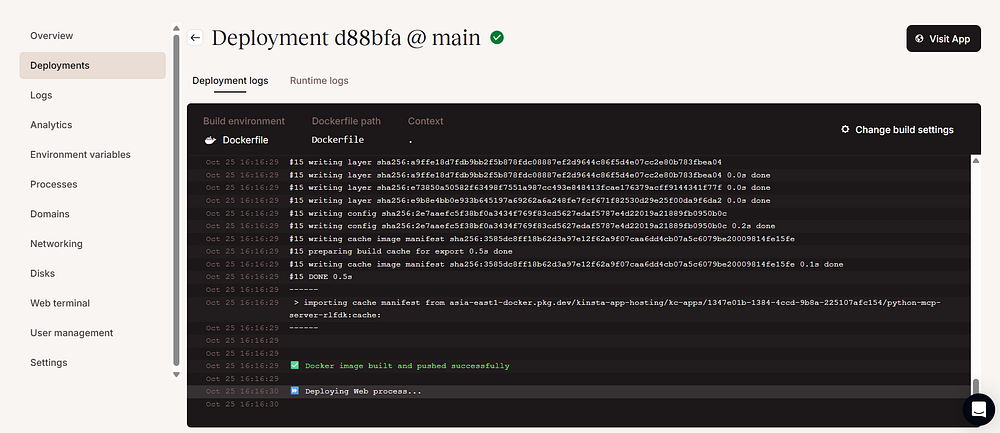How to Build Your Own MCP Server with Python

# Building an MCP Server in Python with FastMCP
Artificial intelligence is evolving rapidly. Modern AI models can **reason**, **write**, **code**, and **analyze** in ways that once seemed impossible.
However, there’s still one important limitation: **context**.
Most AI models cannot directly access your **local files**, **APIs**, or **real‑time data** — their knowledge is limited to what’s inside a prompt.
The [Model Context Protocol](https://www.turingtalks.ai/p/how-model-context-protocol-works) (**MCP**) solves this challenge. MCP securely connects AI models to your tools, APIs, and systems through **MCP servers**.
In this guide, you’ll learn to **build your own MCP server using Python**, step‑by‑step.
By the end, you’ll have a server capable of:
- **Adding numbers**
- **Returning random secret words**
- **Fetching live weather data**
You’ll also learn how to **deploy your MCP server to the cloud**.
---
## 📚 Table of Contents
- [Understanding the Model Context Protocol](#understanding-the-model-context-protocol)
- [Setting Up Your Environment](#setting-up-your-environment)
- [Creating the Project](#creating-the-project)
- [Configuring Logging](#configuring-logging)
- [Creating the MCP Server](#creating-the-mcp-server)
- [Defining Tools](#defining-tools)
- [Example 1: Adding Two Numbers](#example-1-adding-two-numbers)
- [Example 2: Returning a Random Secret Word](#example-2-returning-a-random-secret-word)
- [Example 3: Fetching Weather Data](#example-3-fetching-weather-data)
- [Running the Server](#running-the-server)
- [Testing the Tools](#testing-the-tools)
- [Deploying to Sevalla](#deploying-to-sevalla)
- [Why Build an MCP Server?](#why-build-an-mcp-server)
- [Expanding the Server](#expanding-the-server)
- [Conclusion](#conclusion)
---
## Understanding the Model Context Protocol
**MCP** is an open standard defining how AI models communicate with external systems.
It works like an API, but designed specifically for AI assistants.
With MCP, you can:
- Build a server so ChatGPT can read local files
- Expose internal APIs to AI models
- Make Python functions callable by AI
MCP ensures all communication is **structured**, **secure**, and **scalable**. It uses [Server-Sent Events (SSE)](https://developer.mozilla.org/en-US/docs/Web/API/Server-sent_events/Using_server-sent_events) for real‑time updates without constant polling.
---
## Setting Up Your Environment
**Requirements:**
- **Python 3.9+**
Install required packages:
pip install fastmcp requests
We’ll use:
- **FastMCP** — to easily build MCP servers
- **Requests** — for API calls (e.g., weather data)
Source code available on [GitHub](https://github.com/sevalla-templates/python-demo-mcp-server).
---
## Creating the Project
Create `server.py`:
import logging
import os
import random
import sys
import requests
from mcp.server.fastmcp import FastMCP
---
## Configuring Logging
name = "demo-mcp-server"
logging.basicConfig(
level=logging.INFO,
format='%(name)s - %(levelname)s - %(message)s',
handlers=[logging.StreamHandler()]
)
logger = logging.getLogger(name)
Logs will be clean and informative:
demo-mcp-server - INFO - Tool called: add(3, 5)
---
## Creating the MCP Server
port = int(os.environ.get('PORT', 8080))
mcp = FastMCP(name, logger=logger, port=port)
- Port defaults to `8080` if `PORT` env var is not set
- `FastMCP` object = your running MCP server
---
## Defining Tools
Every function decorated with `@mcp.tool()` becomes available to clients.
### Example 1: Adding Two Numbers
@mcp.tool()
def add(a: int, b: int) -> int:
"""Add two numbers"""
logger.info(f"Tool called: add({a}, {b})")
return a + b
---
### Example 2: Returning a Random Secret Word
@mcp.tool()
def get_secret_word() -> str:
"""Get a random secret word"""
logger.info("Tool called: get_secret_word()")
return random.choice(["apple", "banana", "cherry"])
---
### Example 3: Fetching Weather Data
@mcp.tool()
def get_current_weather(city: str) -> str:
"""Get current weather for a city"""
logger.info(f"Tool called: get_current_weather({city})")
try:
endpoint = "https://wttr.in"
response = requests.get(f"{endpoint}/{city}", timeout=10)
response.raise_for_status()
return response.text
except requests.RequestException as e:
logger.error(f"Error fetching weather data: {str(e)}")
return f"Error fetching weather data: {str(e)}"
---
## Running the Server
if __name__ == "__main__":
logger.info(f"Starting MCP Server on port {port}...")
try:
mcp.run(transport="sse")
except Exception as e:
logger.error(f"Server error: {str(e)}")
sys.exit(1)
finally:
logger.info("Server terminated")
Run:
python server.py
---
## Testing the Tools
In an **MCP-compatible client**, request:
{
"tool": "add",
"args": [5, 7]
}
Response:
{
"result": 12
}
Or via cURL:
curl http://localhost:8080/tool/get_current_weather?city=London
---
## Deploying to Sevalla
[Sevalla](https://sevalla.com/) offers quick, affordable MCP deployment.
Steps:
1. Log in to [Sevalla](https://app.sevalla.com/login)
2. Open **Templates**
3. Select **Python MCP Server**
4. Click **Deploy Template**
5. Wait for green checkmark ✅
6. Click **Visit app** — use given URL for production




---
## Why Build an MCP Server?
- **Direct AI-to-Database** connectivity
- **Automation**
- **Data governance**
- **Rapid experimentation**
---
## Expanding the Server
Ideas:
- File operations
- Database queries
- Integrations with GitHub, Slack APIs
- System monitoring
Each becomes an MCP tool available to your AI.
---
## Conclusion
You now know how to:
- Build an MCP server with **FastMCP**
- Add functional tools
- Run and test locally
- Deploy via **Sevalla**
The **Model Context Protocol** lets AI models interact with real‑world systems. With just a few Python functions, you can expand your AI’s capabilities in meaningful, safe ways.


